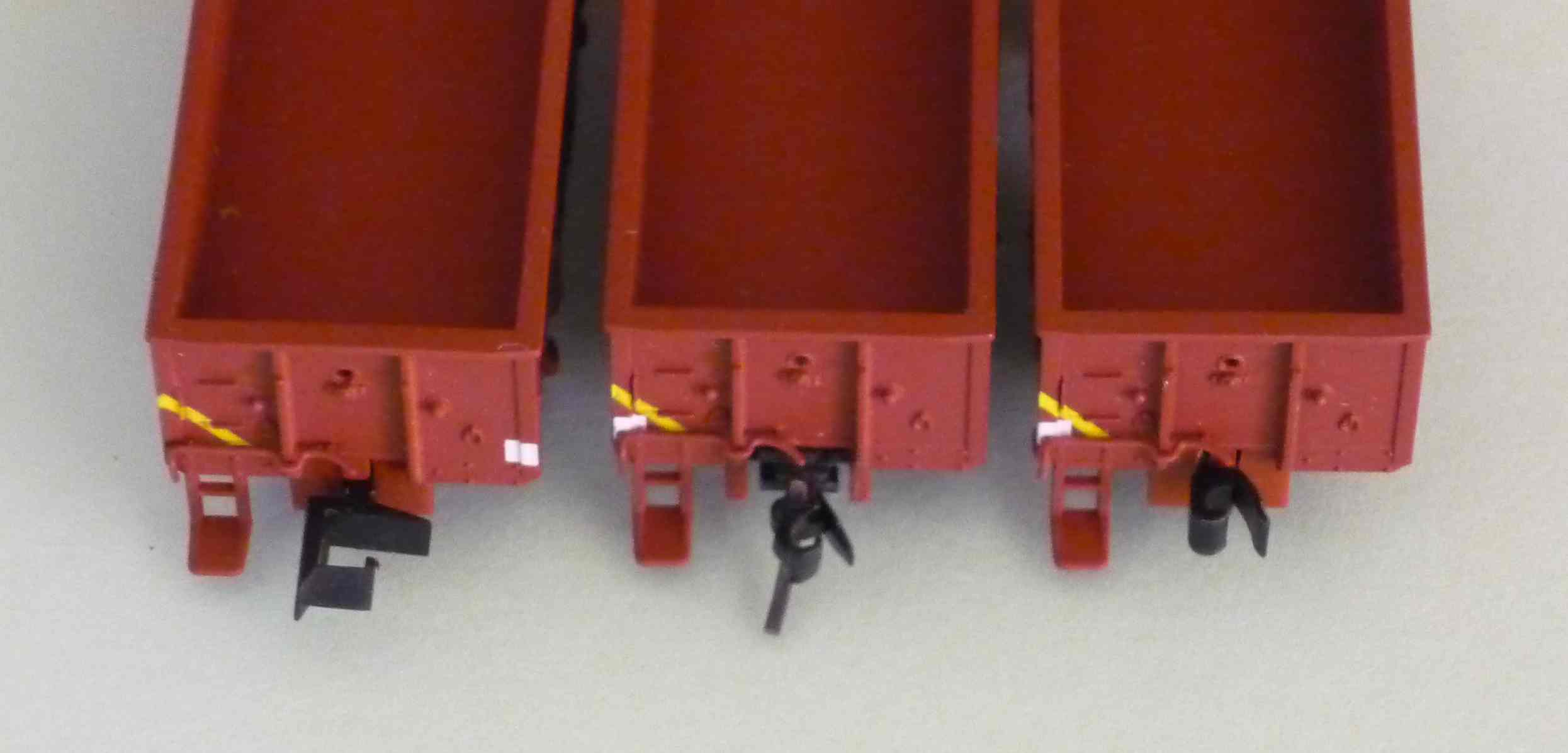A Word about Couplers


There are two types of N Scale couplers in circulation and they are not compatible with one another. These are commonly called "Rapido" couplers which is an older style and "Knuckle" couplers of which Microtrains is the most common brand so this type is often referred to has "Microtrains". You may sometimes hear reference to Kadee couplers. Kadee is actually a brand of HO scale knuckle coupler. Microtrains was once part of the same company but was split off many years ago so anyone referring to N scale Kadee couplers is really referring to Microtrains. Another type of knuckle coupler is the Red Caboose Unimate. These are cheaper than Microtrains couplers but much more difficult to couple and uncouple and much less commonly used.
So which should you use? Fussier people usually go with knuckle couplers because they look more realistic. In a line of wagons, many people don't pay a lot of attention to what sort of couplers are used so you can probably get away with any - its up to you. There are other factors to consider. If you want to do coupling/uncoupling, forget the Unimate. If you want smaller, more realistic gaps between wagons, Unimates are best. The second picture shows the various couplers between GY wagons. After having tried these three alternatives, I'm giving up on the Unimates and will replace these before long.
An alternative to having couplers attached directly to the underside of a wagon body is to use bogies with couplers combined as one unit. These are simpler to attach, don't rely on wagon heights to be correct and can be superior in negotiating tight curves, though I don't recall ever seeing a coupler attached to a bogie on a real train. Microtrains and Rapido variants are available.
Of the Ready-to-run Australian models available, Microtrains is the most common, I think exclusively used for locomotives. In order to keep prices down, the 4-wheel Aust-N-Rails wagons were made with Rapido couplers, though it is not particularly difficult to convert them to Microtrains. One option is to replace couplers on one end of a few wagons so then you can run a train with a mix of coupler type. You can then convert others at a later date if you wish, as time and budget permit. This is the strategy I have adopted. I'd like to convert them all to Microtrains couplers eventually but I'm happy to run a mix for now and use my time and money elsewhere.
If you choose to switch to Microtrains, #1015 is the one most commonly used when body mounting. You can buy them ready to use or the cheaper option is to assemble them yourself. Being used so often, it's probably worth mastering the art of assembling these yourself, it is not difficult.
A new emerging alternative is McHenry couplers from Athearn. These may be a simpler, better switch from rapido. Early days yet, but worth keeping an eye on I think.
For a more detailed discussion on couplers, check this story at The N-Scale Division. Also well worth a look is this episode of Reality Reduced. The show has a review of the McHenry coupler and demonstrates fitting and switching couplers.